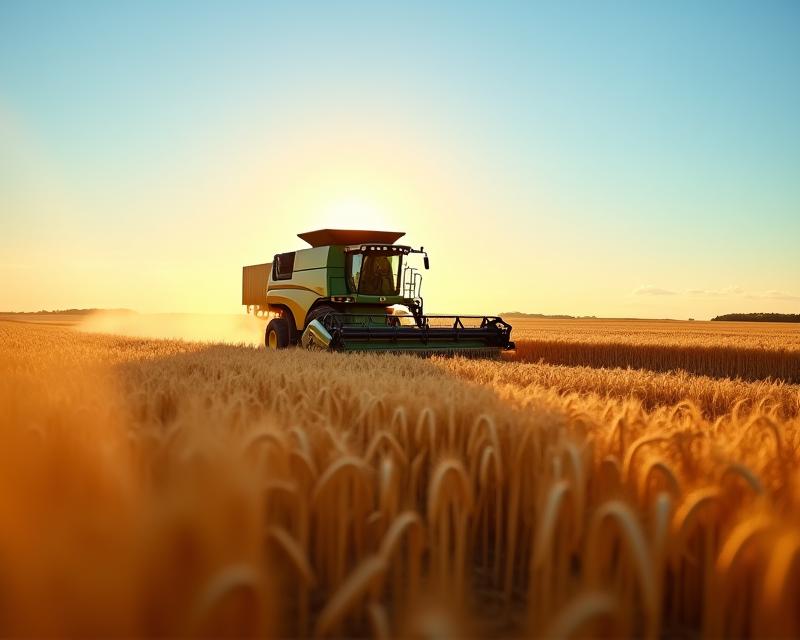Harvest Time: Combining vs. Swathing Small Grains
Publish in Crops el 22/07/2025 16:42
Harvest Time: Combining vs. Swathing Small Grains
Harvest time is a crucial period for farmers, and getting your small grains – like barley and oats – harvested efficiently is key to a successful season. Two primary methods exist for gathering these crops: combining and swathing. Understanding the differences between these techniques, along with the equipment involved and optimal timing, can significantly impact your grain recovery and overall farm productivity.

Combining: The All-in-One Solution
Combining is a highly efficient harvesting method that combines reaping, threshing, and winnowing into a single operation. A combine harvester cuts the crop, separates the grain from the straw and chaff, and then cleans the grain. This process results in a clean grain output and leaves the straw in rows across the field. Combining is best suited for larger fields and those with relatively uniform crop height. The equipment is more expensive upfront, but the time saved and reduced labor costs often make it a worthwhile investment for many farmers. Timing is critical with combining; you want to avoid excessive moisture in the grain to prevent yield loss and spoilage. Generally, a moisture content of around 14-15% is ideal for combining.
Swathing: A More Flexible Approach
Swathing involves cutting the crop and laying it down in windrows – long rows of standing grain. This allows the crop to dry partially before being collected. Swathing is a more flexible option, particularly for smaller fields or fields with uneven terrain. It's also a good choice when the crop is too tall for a combine or when you want to manage the drying process more carefully. You'll need a swather – a machine that cuts and lays the crop in windrows – followed by a grain cart to collect the swaths. Finally, a combine is used to harvest the swaths. The advantage of swathing is the ability to control the drying process, which can improve grain quality. However, it requires more labor and equipment than combining, and it can be more susceptible to weather delays.
Equipment & Timing: Making the Right Choice
The choice between combining and swathing depends on several factors, including field size, crop height, moisture content, and available equipment. Combining requires a combine harvester, which can be a significant investment. Swathing requires a swather and a grain cart, along with a combine for the final harvest. Timing is crucial for both methods. For combining, aim for a moisture content of 14-15%. For swathing, wait until the crop is about 80% dry to prevent spoilage during storage. Careful monitoring of weather conditions and grain moisture is essential for maximizing yield and minimizing losses. Consider your farm's specific needs and resources when deciding which harvesting method is best for you.
- Combining: Best for large, uniform fields.
- Swathing: Best for smaller fields or uneven terrain.
Ultimately, understanding the pros and cons of combining and swathing will empower you to make informed decisions about your harvest strategy, leading to a more efficient and profitable season. Don't hesitate to consult with agricultural extension agents or experienced farmers in your area for personalized advice.





